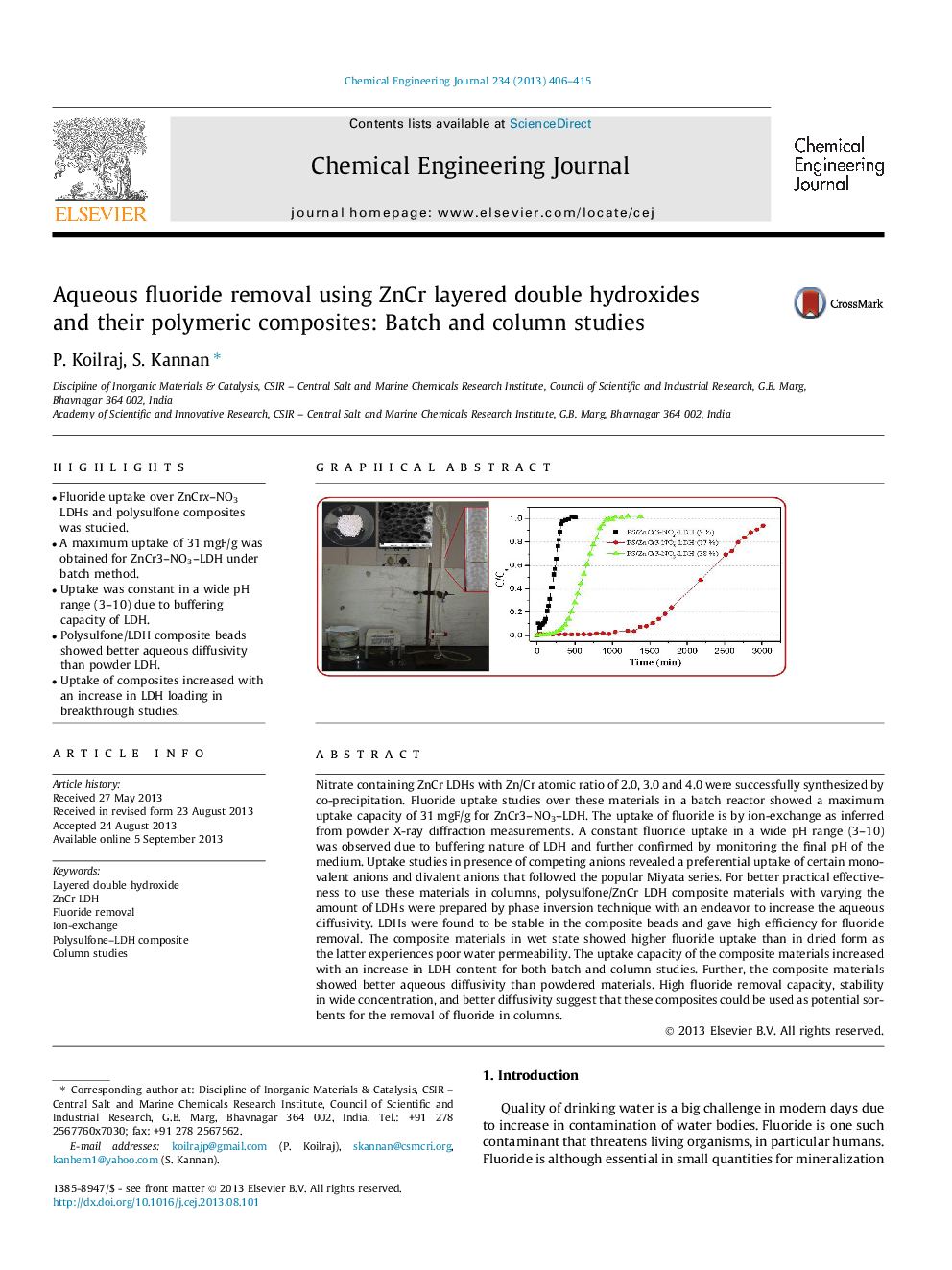| Article ID | Journal | Published Year | Pages | File Type |
|---|---|---|---|---|
| 148086 | Chemical Engineering Journal | 2013 | 10 Pages |
•Fluoride uptake over ZnCrx–NO3 LDHs and polysulfone composites was studied.•A maximum uptake of 31 mgF/g was obtained for ZnCr3–NO3–LDH under batch method.•Uptake was constant in a wide pH range (3–10) due to buffering capacity of LDH.•Polysulfone/LDH composite beads showed better aqueous diffusivity than powder LDH.•Uptake of composites increased with an increase in LDH loading in breakthrough studies.
Nitrate containing ZnCr LDHs with Zn/Cr atomic ratio of 2.0, 3.0 and 4.0 were successfully synthesized by co-precipitation. Fluoride uptake studies over these materials in a batch reactor showed a maximum uptake capacity of 31 mgF/g for ZnCr3–NO3–LDH. The uptake of fluoride is by ion-exchange as inferred from powder X-ray diffraction measurements. A constant fluoride uptake in a wide pH range (3–10) was observed due to buffering nature of LDH and further confirmed by monitoring the final pH of the medium. Uptake studies in presence of competing anions revealed a preferential uptake of certain monovalent anions and divalent anions that followed the popular Miyata series. For better practical effectiveness to use these materials in columns, polysulfone/ZnCr LDH composite materials with varying the amount of LDHs were prepared by phase inversion technique with an endeavor to increase the aqueous diffusivity. LDHs were found to be stable in the composite beads and gave high efficiency for fluoride removal. The composite materials in wet state showed higher fluoride uptake than in dried form as the latter experiences poor water permeability. The uptake capacity of the composite materials increased with an increase in LDH content for both batch and column studies. Further, the composite materials showed better aqueous diffusivity than powdered materials. High fluoride removal capacity, stability in wide concentration, and better diffusivity suggest that these composites could be used as potential sorbents for the removal of fluoride in columns.
Graphical abstractFigure optionsDownload full-size imageDownload as PowerPoint slide
